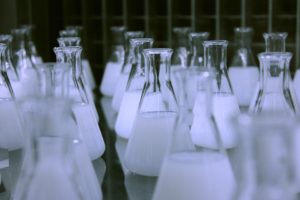 As women are waiting later in life to have children, many are becoming increasingly worried about their fertility. They hear stories of their friends having trouble conceiving and begin to fear they may experience infertility as well. These women are often tempted to have their ovarian reserve tested and companies are marketing their products to these women.
As women are waiting later in life to have children, many are becoming increasingly worried about their fertility. They hear stories of their friends having trouble conceiving and begin to fear they may experience infertility as well. These women are often tempted to have their ovarian reserve tested and companies are marketing their products to these women.
These tests measure the amount of eggs a woman has left in her ovaries. Each woman is born with a set number of eggs that gradually diminish until menopause. The thought was that a higher number of eggs led to a greater potential for pregnancy. The ovarian reserve test measures several hormone markers that indicate a high or low reserve of eggs. These tests are marketed to women who have had no symptoms of infertility, but simply want to know their chances of getting pregnant. These tests can cost anywhere from $150 to over $300 and can lead women to freezing eggs or trying to get pregnant before ready based on the outcome. On the other hand, a indicated high ovarian reserve can lead a woman to thinking she has many years ahead of her to plan a family.
Recently, science has shown that these tests are not a good indicator of fertility. In a test done on over 700 women between the ages of 30 and 44, there was no correlation between a woman’s ovarian reserve and whether she would eventually get pregnant. Many factors come into play in regards to fertility, and ovarian reserve is just one piece of the puzzle. Factors like egg quality and uterine quality are also very important. It is quite difficult for a test or even a series of tests to accurately predict a woman’s chances of conception.
The results of this study show that there is no easy answer when it comes to determining fertility. There is no one test that can give a definitive yes or no. So how should a woman make decisions in regards to family planning? The best indicator of fertility is still age. As a woman gets older, her chances for infertility increase. That’s not to say it is impossible for a woman to get pregnant in her late 30s and early 40s, but her chances are diminished and her likelihood of needing fertility treatments increase.





